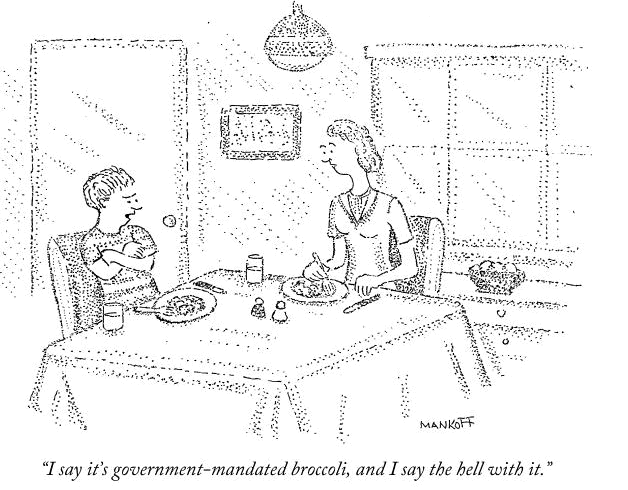|
|
|
|
|
|
|
|
|
|
|
|
|
|
|
SUPERSIZING |
|
It’s
true that the ban will be easy to circumvent: if you want to
drink thirty-two ounces, you can just buy An
executive at the American Beverage Association has dismissed
the plan, saying that “150 years of research finds that
people consume what they want.” Actually, the research shows
that what people “want” has a lot to do with how choices
are framed. In one well-known study, researchers put a bowl of
M&M’s on the concierge desk of an apartment building,
with a scoop attached and a sign below that said “Eat Your
Fill.” On alternating days, the experimenters changed the
size of the scoop—from a tablespoon to a quarter-cup scoop,
which was four times as big. If people really ate just “what
they want,” the amount they ate should have remained roughly
the same. But scoop size turned out to matter a lot: people
consumed much more when the scoop was big. This suggests that
most of us don’t have a fixed idea of how much we want;
instead, we look to outside cues—like the size of a package
or cup—to instruct us. And since the nineteen-seventies the
portion sizes offered by food companies and restaurants have
grown significantly larger. In 1974, the biggest drink
McDonald’s offered was twenty-one ounces. Today, that’s
roughly the size of a “small” drink at Burger King. In
effect, the scoops have got bigger, and consumption has risen
accordingly. Of
course, if you don’t want the large soda, you needn’t
order it. Yet the mere existence of the supersize can change
your idea of how much you want to drink. In a classic
experiment by Itamar Simonson and Amos Tversky, people asked
to choose between a cheap camera and a pricier one with more
features were divided more or less equally between the two
options. But when a third option—a fancy, very expensive
camera—was added to the mix most people went for the
mid-range camera. The Many
economists would say that, if we want to discourage soda
consumption, taxing it—the way we do alcohol and
tobacco—would be more efficient than a ban. Some European
countries do have such taxes, but the idea has been a
political non-starter in If
all this sounds as if -- James
Surowiecki, The New Yorker,
|
